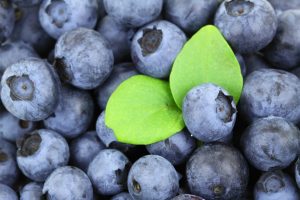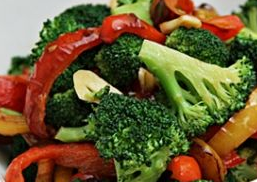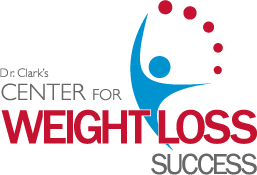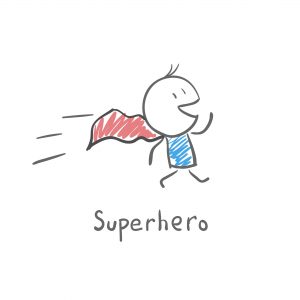Let’s talk about antioxidants. You hear about them in the media. Are these miracle workers or is this just marketing?
The antioxidants kick out the free radicals. These are superheroes! It’s the epic story of good vs evil. They are the fearless defenders of basically everything. They can cure cancer, prevent aging, and supercharge your immune system. They basically can do it all, right?! Are these miraculous disease fighting nutrients or over-hyped marketing gimmicks?
What we’re trying to address is the oxidative challenge of life. A paradox of metabolism is that the majority of complex organisms (humans) require oxygen. Oxygen is a highly reactive molecule that not only sustains life but also produces reactive oxygen species: hydroxyl radical (OH) and super-oxide anion (O2-). They are free radicals. These free radicals are by-products of our energy producing process (cellular respiration). Cellular respiration is how the cells produce energy and sustain life. We can’t live without this happening on a cellular level. The trick is to keep these highly reactive free radicals under control to prevent cellular damage. These free radicals can cause cellular damage. It’s thought that this cellular damage done by the oxygen-free radicals can cause a lot of health problems. We want to keep them under control. Antioxidants can potentially help us here.
Are you getting “rusty?” I wanted to find a simplified version to think about this. Oxygen and iron produce rust. You can actually do it without the oxygen. In order for rust to form we have to have oxygen available. Are these oxygen free radicals causing some damage within our body? That’s the real question. Just like the Tin-Man got squeaky in the Wizard of Oz, potentially we may need to be oiled up a little bit. What are the ways we can prevent this damage from occurring?
What are antioxidants? The oxidants are producing damage. Antioxidants may be able to prevent that. They are molecules that are capable of inhibiting the oxidation of other molecules. If you’re inhibiting the oxidation of other molecules, we’re preventing the rust. Oxidation is a chemical reaction that transfers electrons from one substance to another. They’re just moving electrons around. Part of this is that oxidation reactions are crucial for life (respiration and production of energy). If we’re not doing this, we are dead. We can’t live without it, but we want to prevent the damage. When we’re breathing in and out oxygen is travelling throughout our body. Every single cell in our body needs it because oxidation reactions are crucial for life. We want to limit the by-products that can cause damage. So, the oxidation can produce these free radicals. These oxygen free radicals can lead to chain reactions that cause cell damage and cell death. These oxygen free radicals are even more reactive than oxygen is. They can cause damage. We don’t want to cause damage to the DNA. When the cells re-produce and there’s damage to the DNA, potentially you’ve cause damage that will keep on going. Tumor cells can come from normal cells. There’s DNA damage and all of a sudden they’re growing out of control. Antioxidants can stop some of these chain reactions. It does this by removing the free radical intermediates. It’s done by giving up electrons. Then it can stop these reactions by occurring.
We can think of antioxidants in two different ways. They’re either Hydrophilic or Hydrophobic. Hydro means water. Phyllic means loves water. Hydrophobic means fear of water. Some work well with water and others do not work well with water. There are different types of antioxidants and they’ll do different things in different parts of your cell. They specifically can do different things for different reactions. They want to neutralize these free radicals.
Where do these free radicals come from? Typically they come from different things in our life. It could come from the following things: ultraviolet rays, atmospheric pollution, stress, and poor nutrition. All these things affect all of our cells. They can cause free radicals. If these free radicals occur they can cause cellular damage. We want to protect these cells with antioxidants.
How does an antioxidant work? For an oxygen free radical to form, the molecule has to lose an electron. Then it becomes unstable, thus becoming the “free radical.” They want to steal an electron from somewhere. They try to steal it from some nearby molecule. This causes a chain reaction. It can go all through the cell and cause cellular damage. An antioxidant is an electron donor. It can donate an electron and still remain stable. It has to be able to donate an electron to these free radicals and still remain stable. This stops the damage. The antioxidants bind to the free radicals to form stable molecules. Stable molecules will prevent the damage. It’s a relatively simple concept. It’s not quite that simple in chemistry.
What are common antioxidants? There are a lot of them out there but many vitamins are antioxidants. Vitamin C is one of the best out there. Vitamin A and the carotenoids are antioxidants. Those are found in the following: carrots, squash, broccoli, sweet potatoes, tomatoes, kale, collards, cantaloupe, peaches, apricots (bright colored fruits and veggies). You’ll find that many of these antioxidants occur naturally in bright colored fruits and vegetables. Vitamin C is found in citrus fruits, green peppers, broccoli, leafy veggies, strawberries and tomatoes. I don’t encourage people to eat a lot of fruit, especially if they’re sensitive to carbohydrates. Vitamin E is a fat-soluble vitamin found in nuts and seeds, green leafy veggies, vegetable oil, and liver oil. It’s in a lot of things that we typically eat. We talked about selenium with thyroid. It’s very important for thyroid function. It’s found in the following: fish, shellfish, red meat, grains, eggs, chicken, and garlic. There are a lot of vitamin-like antioxidants. You’ll sometimes see these sold as antioxidants. Coenzyme Q10 is very important. It can be helpful if you’re on a cholesterol medication (statin). If you’re on a statin you ought to be taking Coenzyme Q10 because there’s a lot of damage that occurs in the cells with statins. Coenzyme Q can offset that. It’s an important carrier in mitochondria during energy synthesis. Glutathione is often sold in health food stores because it’s a good antioxidant. The problem is that it’s digested in the intestinal track so you don’t just absorb it. You have to eat the precursors that can make the glutathione. It’s an electron donor and can be increased by supplementing with ALA, melatonin, and milk thistle. Flavonoids/Polyphenols are in a lot of whole foods. They are found in soy, red wine, purple grapes, pomegranate, cranberries, and tea. You’ll often see on the labels, “high in flavonoids.” Lycopene you’ll see on every ketchup bottle in the world. It’s in tomato and tomato products, pink grapefruit, and watermelon. Lutein is found in dark green veggies such as kale, broccoli, kiwi, brussel sprouts, and spinach. Lignan is in flaxseed, oatmeal, barley, and rye.
There are antioxidant enzymes made by the body. These enzymes can help produce the antioxidants. Superoxide Dismutase (SOD) stabilizes that superoxide anion. It can donate electrons. Catalase is another enzyme that converts H202 (hydrogen peroxide) to O2 (oxygen) and H2O. Glutathione peroxidase also breaks down H2O2 to O2 to H2O. The simplified definition of an antioxidant is they are electron donors. They stabilize potentially damaging molecules. Are there health benefits? Yes!
Where are the best antioxidants? Not necessarily in a pill form. Just like when we talked about fiber. The best fiber comes from food. The best antioxidants come from food. It’s the bright colored veggies and fruits (be careful if you’re carb sensitive) that are very high in antioxidants.
 You’ll often see what’s called anti-aging antioxidants. It’s a lot of marketing but there’s something to it. I think a lot of the damage of aging is these oxygen free radicals. They can cause damage to the cells, specifically the DNA, and then cause aging. Can we prevent that by taking antioxidants? Most things that have antioxidants in them are very healthy. I encourage you to eat these foods but they’re not necessarily going to stop the aging process. These foods are: acai berry, pomegranate, passion fruit, blueberries, kiwi, cranberries, apricots, prunes, and more. If they’re whole foods, they will typically contain antioxidants. Dark chocolate contains antioxidants. Just a little though…
You’ll often see what’s called anti-aging antioxidants. It’s a lot of marketing but there’s something to it. I think a lot of the damage of aging is these oxygen free radicals. They can cause damage to the cells, specifically the DNA, and then cause aging. Can we prevent that by taking antioxidants? Most things that have antioxidants in them are very healthy. I encourage you to eat these foods but they’re not necessarily going to stop the aging process. These foods are: acai berry, pomegranate, passion fruit, blueberries, kiwi, cranberries, apricots, prunes, and more. If they’re whole foods, they will typically contain antioxidants. Dark chocolate contains antioxidants. Just a little though…
There are a lot of common myths about antioxidants. Part of that is free radicals must be destroyed! Again, as we mentioned at the beginning, free radicals are actually normal byproducts of normal metabolism. If we stop that, we’d be dead. We can’t stop that and we don’t want to stop that. We want to do it in a controlled manner. Another myth is that all antioxidants are created equal. All these different foods have different antioxidants in them. They have different jobs. You want to get your antioxidants from a broad variety of foods. Another myth is that all antioxidants come from fruits and veggies. That’s not true because you can find them in meat, dairy, and eggs. Typically whole foods are a good source. The next myth is antioxidant fortified foods are healthier. There’s no evidence of this. You can get the antioxidants from whole foods. Adding more antioxidants to those foods has never been shown to be healthier. The last myth was a theoretical concept a few years ago. The myth is if I exercise and take antioxidants I will become super fit. However, the way muscle function improves is to have some stress on the muscle in order for function to improve. That’s why when we exercise we get sore. A little bit of soreness is good. A lot of soreness is not so good. The way we improve from a fitness standpoint is that you need to have some muscle growth there. Part of the way a muscle grows is by undergoing stress. To improve muscle function it is some of the result of this oxidative stress. If we prevent the oxidative stress during exercise you could potentially doing yourself more harm than good. You need to stress the muscle. Just be careful. You don’t want to injure yourself. Some of the best fitness gains occur during the aerobic into the anaerobic energy systems. By taking antioxidants, it may be harder for that to happen.
 Here are a few tips for success! Eat your colorful veggies! The evidence is mixed about whether taking antioxidant supplements is beneficial. There’s never been a big study that’s shown that it’s really helpful. Eat the whole foods. Most of what you see is marketing! The “Basics” is always important: eat right, exercise daily, take your vitamins, get plenty of rest, and handle stress. You have to do these things right. Throwing some supplements on top of that is not doing a whole lot to help. Adding antioxidants to the “Basics” potentially will be helpful. I will encourage you to go the whole food route.
Here are a few tips for success! Eat your colorful veggies! The evidence is mixed about whether taking antioxidant supplements is beneficial. There’s never been a big study that’s shown that it’s really helpful. Eat the whole foods. Most of what you see is marketing! The “Basics” is always important: eat right, exercise daily, take your vitamins, get plenty of rest, and handle stress. You have to do these things right. Throwing some supplements on top of that is not doing a whole lot to help. Adding antioxidants to the “Basics” potentially will be helpful. I will encourage you to go the whole food route.
If you have any questions don’t hesitate to leave a message below or email them to [email protected]. Also if you think of some once we’re all done, give us a yell and we’ll answer them. Stop by the Center for Weight Loss Success and get your Body Composition Analysis done. You need to make sure you’re losing fat and preserving lean body mass.







 Cat Keller has a wealth of experience in marketing, e-marketing, advertising and customer service and manages our Weight Loss Nutritional Store. She is always planning something fun and exciting. special events, discounts, giveaways – it’s never a dull moment. She is happy to help you with questions you may have regarding our products or services. Cat is a graduate of William & Mary, where she studied Government/Pre-Law and minored in Marketing.
Cat Keller has a wealth of experience in marketing, e-marketing, advertising and customer service and manages our Weight Loss Nutritional Store. She is always planning something fun and exciting. special events, discounts, giveaways – it’s never a dull moment. She is happy to help you with questions you may have regarding our products or services. Cat is a graduate of William & Mary, where she studied Government/Pre-Law and minored in Marketing.